Daniel Weil designs deconstructed clocks for Design Museum exhibition
A series of clocks with mechanisms suspended from wires connected to plywood frames will be presented as part of the first museum exhibition dedicated to the work of Argentinian designer Daniel Weil at London's Design Museum (+ slideshow).
The exhibition, which opens on 14 May, is called Daniel Weil and the Art of Design and will provide an overview of Weil's 30 year career in the design industry, from his studies at the Royal College of Art to his role at multidisciplinary design consultancy Pentagram.
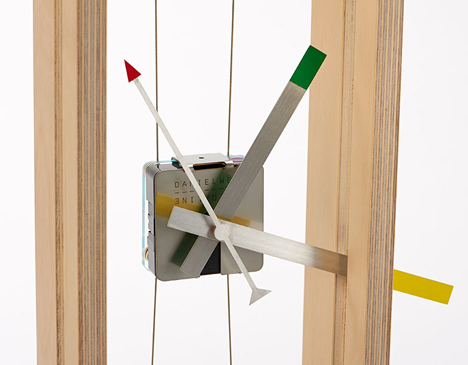
As well as the collection of three clocks, which were designed specially for the exhibition, it will include sketchbooks and archival material relating to some of Weil's best-known designs, including his Bag Radio, a deconstructed radio contained in a transparent plastic bag that he developed in 1981.
"I decided when I was given the show that it wasn't just going to be a retrospective-type exhibition," Weil told Dezeen. "The purpose is to explain about my career and my thoughts about design so the focus is really on process, on trying to explain the things people don't see about design, the amount of work that goes into creating things and how to develop as a designer. I've done this for 33 years so I have a sort of perspective that hasn't really changed since I graduated."
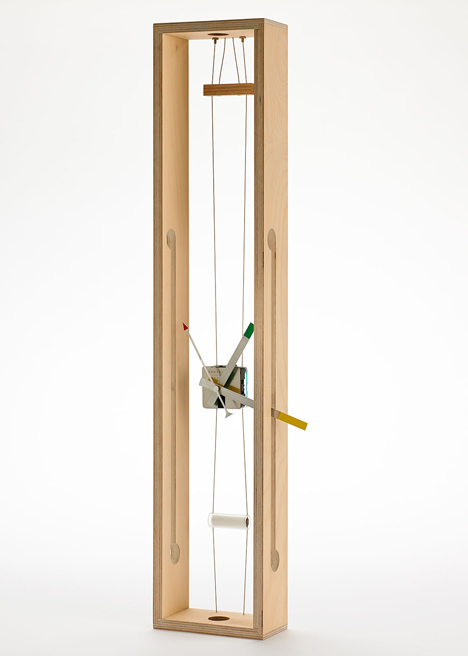
Having moved to London in 1978 following the completion of an architecture degree in his native Buenos Aires, Weil studied industrial design at the Royal College of Art and graduated in 1981.
He set up a studio to develop his own projects, including a collection for the influential Postmodern design group Memphis in 1982, and worked for international brands including Alessi, Swatch, United Airlines and Knoll.
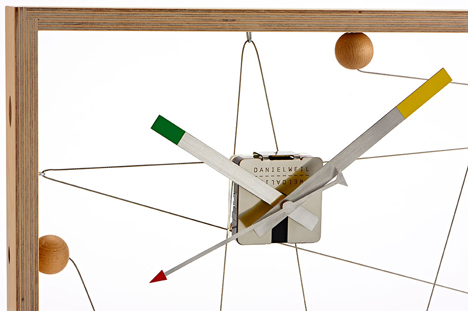
From the earliest stage of his career, he has been interested in the design of timepieces and has carried this on in recent projects including the one-off Clock for an Architect he created in 2010, which featured a house-shaped mechanism attached to a cog for setting the time by an elastic belt.
"In the way I see things as a designer I thought early on that the element of time is quite an important transformer of art and of science in the twentieth century but seemed to have bypassed our discipline," said Weil. "I use time as a subject to really represent the time we live in."
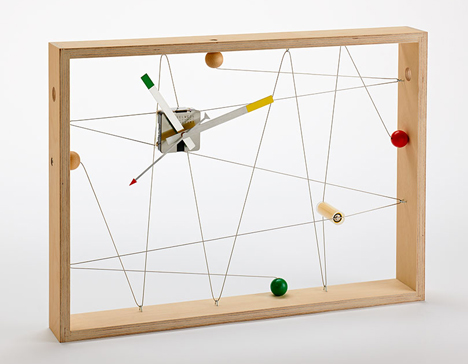
Similarly to the Clock for an Architect, the new timepieces are configured in unusual ways with the battery and mechanism clearly separated and connected by stainless steel wires.
"This new group [of clocks] tries to address how we relate now to machines and to instruments," Weil explained. "The clock has been so conventionally arranged behind the face and the identical quartz movement that's been around since the 1970s so I wanted to create this relationship between the movement and the power source."
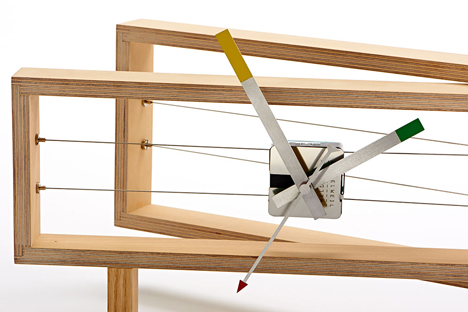
The Power Lines design features a mechanism suspended from wires connected to two intersecting plywood frames that criss-cross and carry the current from a battery in a transparent perspex holder to the clock.
Instrument is arranged vertically with two wires intended to resemble the aesthetic of a stringed instrument such as a violin or harp.
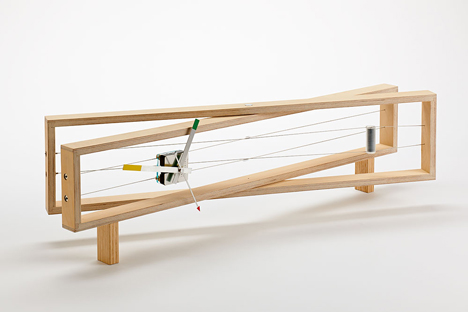
The dynamic pattern of wires that support the mechanism of the By George clock was designed to evoke the constant motion of electrons in contemporary electronics. Spheres of painted beech reference George Nelson's Ball Clock design from 1948 but are scattered around the edges of the frame rather than arranged radially.
Each of the clock designs is being produced in a limited first edition of 50 pieces by London homewares brand By..., which will subsequently continue producing them as an unlimited run.
Time Machines: Daniel Weil and the art of design, curated by Martina Margetts, will be on show at the Design Museum from 14 May to 25 August.